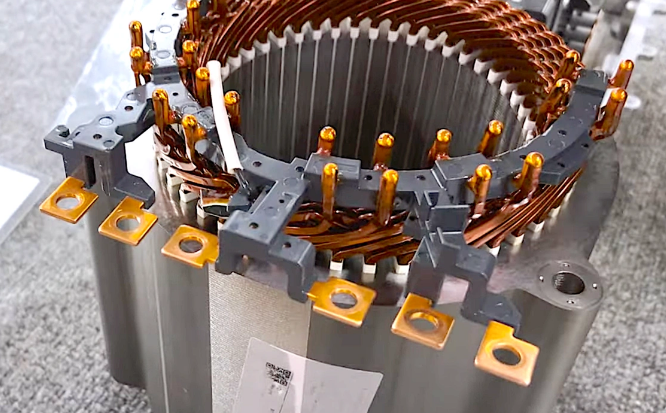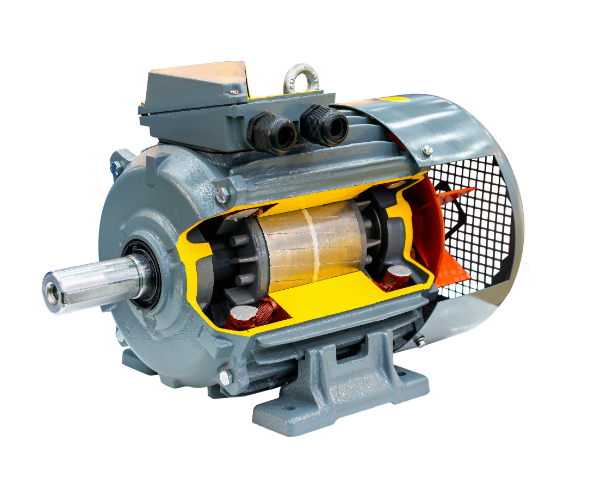Voltage imbalance will lead to overheating, loss of efficiency, increased vibration, and torque reduction in three-phase motors during their operation. For every 1% increase in voltage imbalance, the temperature rise increases by 6% to 10%. Regular voltage balance testing and correction devices are effective ways to prevent failures.
Overheating
Voltage imbalance is one of the most common power quality issues that occur during the operation of a three-phase motor. This directly leads to current imbalance, which in turn causes overheating. Under normal conditions, the current in each of the three phases of a motor should be equal or approximately equal. However, if the supply voltage is imbalanced, one or two phases may show significantly higher current flow compared to the others. According to research, for every 1% increase in voltage imbalance, there is a temperature rise of 6% to 10%. Prolonged operation of motors at higher-than-desired temperatures may cause aging or deterioration of insulation material, which in most cases results in insulation breakdown and eventually motor burnout.
Overheating not only affects the motor itself but also requires the whole system to dissipate more heat. Poor ventilation of the enclosure or equipment where the motor is installed can exacerbate motor damage if high temperatures persist. It logically follows that keeping track of the operating temperature of the motor and checking voltage balance regularly are vital measures for ensuring the motor works normally.
Reduced Efficiency
Voltage imbalance also severely affects the operating efficiency of the motor. In three-phase motors, design is performed with balanced phase voltages to achieve maximum electromagnetic conversion efficiency. Due to the unbalanced voltage, changes in currents increase energy losses, particularly in the form of copper losses (I²R losses) in both the stator and rotor. In fact, when voltage imbalance increases to 3%, studies have shown that the efficiency of the motor reduces to only about 80% of its original efficiency. This means that some of the electrical energy that could be effectively transformed into mechanical energy is lost, thereby increasing consumption.
In real industrial processes, the efficiency of a motor directly relates to the business’s energy costs. For example, if there is a 5% drop in the efficiency of a 50 kW motor that runs 24 hours daily, the increased cost of electricity may amount to several thousand yuan per year, assuming the electricity price is 0.7 yuan per kilowatt-hour. Therefore, balanced voltage not only ensures the stability of equipment operation but also saves operating costs for the enterprise.

Increased Vibration and Noise
Voltage imbalance can create an asymmetric electromagnetic field in the motor, resulting in increased vibration. In the normal operation of a three-phase motor, the phase voltages are balanced; under these circumstances, the rotor operates smoothly with uniform electromagnetic forces, assuring stability. However, voltage imbalance directly alters the magnetic field distribution within the motor. This means that certain areas are subjected to excessive magnetic forces, while others receive insufficient force; this results in unbalanced forces on the rotor, causing mechanical vibration.
The vibration affects not only the stability of the motor but can also be transferred to other parts of the equipment, creating resonances that eventually can lead to mechanical failures. The presence of vibration is usually followed by increased noise, especially in industrial environments where such noise negatively influences the working conditions for operators and could further destabilize the whole mechanical system. Long-term effects of strong vibration include quicker wear of the bearings and transmission parts of the motor, which increases maintenance costs.
When the voltage imbalance exceeds 2%, vibration and noise issues gradually become apparent. Therefore, installing high-precision voltage-monitoring equipment to detect voltage imbalance allows timely adjustment of voltage balance, reducing vibration and noise.
Reduced Torque Output
Three-phase motors are supposed to have stable torque output; however, due to voltage imbalance, there is always some reduction in torque. Motor torque is directly related to the stator current and rotor flux, which depend upon stable input voltage. When voltage imbalance occurs, the current in each phase becomes asymmetrical, directly influencing the formation of the magnetic field and causing fluctuation or reduction in torque output.
Reduced torque directly affects the motor’s ability to drive applications requiring high starting torque, such as lifting equipment or conveyor belts. In such cases, it is likely that reduced torque may prevent the load from starting properly or result in jammed equipment and overload protection trips. This not only reduces production efficiency but can further lead to additional damage to other equipment.
A 100 kW-rated motor operating under a voltage imbalance of 3% can have its output torque reduced by up to 10% to 15%. Although such a level of reduction may not be a cause for concern if the application is lightly loaded, under heavy load conditions it can prevent equipment from operating.

Shortened Motor Lifespan
The service life of the motor is closely related to its operational stability, working environment, and load condition. Voltage imbalance will affect almost every factor that determines the longevity of the motor. First, voltage imbalance will cause asymmetric current distribution, leading to overheating and deterioration of insulation. Excessive temperature rise accelerates the aging of the insulation material and greatly shortens the service life of the motor.
Voltage imbalance also causes vibration and noise, increasing mechanical wear on the motor. Prolonged vibration may cause fatigue damage to bearings, couplings, and other movable elements, which rapidly brings these critical parts closer to failure. In most cases, it is found that one of the major causes of motor failure is actually bearing failure.
Voltage imbalance can also result in frequent activation of the motor’s protective devices: it can trip overload protectors or engage current protectors. These actions result in mechanical stresses at each shutdown and restart, possibly causing internal electrical shocks that could damage the motor and further shorten its lifespan.
Poor voltage balance is one of the most common reasons for motor failure and may account for 15% to 20% of all industrial motor failures. Therefore, regular checks of voltage balance and optimization of operating conditions should be carried out to extend the service life of motors. If the voltage fluctuation at the workplace is significant, it is necessary to install voltage stabilizers or automatic voltage regulators to ensure long-term stable operation of the motor.








